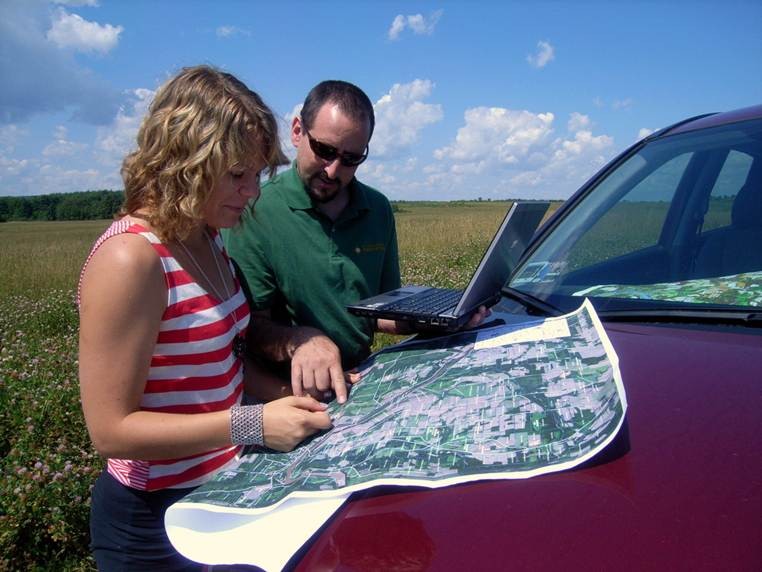A team of professors at the University of Maine at Presque Isle has received $90,000 in grant funding from the Experimental Program to Stimulate Competitive Research [EPSCoR] to assess the feasibility and sustainability of grass biomass production for central Aroostook County.
This is the fifth year in a row that the team has received funding from EPSCoR, a program under the auspices of Maine’s Office of Innovation. EPSCoR grants are awarded by the National Science Foundation to states that are typically not targeted for research grants. The funding UMPI has received – which totals $416,000 and includes a $75,000 grant in 2009, $66,000 in 2010, $95,000 in 2011, and $90,000 in 2012 – is a part of the larger grant led by the University of Maine in Orono and the University of Southern Maine.
The UMPI research team is using the grant funding for its project Assessing the Feasibility and Sustainability of Grass Biomass Production in Central Aroostook County through Research and Stakeholder Partnerships. The project area, which is the most populated region in northern Maine, encompasses the communities of Presque Isle, Caribou Easton, and Fort Fairfield.
“This grant represents a great opportunity to transition this research into community outreach,” Dr. Jason Johnston, project team leader and UMPI Assistant Professor of Wildlife Ecology, said. “During Year 5, we will be producing a variety of outputs that will be useful to people in the County – among them municipal leaders, landowners, Northern Maine Development Commission, and K-12 educators. Over the next year, we’ll be hosting public forums in each town to share what we’ve learned – we hope many people will attend.”
The work the UMPI team is doing during this grant year involves collating its findings from the previous year and creating a comprehensive assessment of the feasibility of grass biomass production in central Aroostook County. During the last grant year, the team quantified the land resource using GIS and satellite imagery, conducted economic analyses, opened a dialogue with stakeholders, surveyed landowners, and assessed economic, production and ecological factors.
Using an analysis of historical land use patterns and current land use based on high-precision GIS mapping, both done during the last grant year, the team will engage a variety of local stakeholders to think about future land use changes. Outreach will consist of public presentations and forums, convening an advisory group of important stakeholders, and a variety of smaller reports that will be made available on the University’s website. A major effort will focus on completing a 12-lesson unit for K-12 teachers and working directly with a group of three to four teachers and three high school students to implement the curriculum.
This year’s team is being led by Dr. Johnston, and includes Dr. Andrew Plant, Assistant Professor at the University of Maine Cooperative Extension; Dr. Kimberly Sebold, Associate Professor of History at UMPI; Dr. David Vail, the Adams Catlin Professor of Economics, Emeritus, at Bowdoin College; and Dr. Chunzeng Wang, Associate Professor of Earth and Environmental Science at UMPI.
Research team members are working on different aspects of the project. Johnston will coordinate a variety of outreach activities and publications and Sebold will lead efforts toward curriculum development and collaboration with teachers. Wang will coordinate efforts to make a variety of historical and current maps, data, and other outreach products available on the University’s website and elsewhere. Vail will be key in helping to pull together a comprehensive feasibility analysis that includes production, technological and economic feasibility. Plant will facilitate engagement with farmers, advise on agronomic issues, provide farm-level economic data and biomass grass yield data, and develop greater connections to stakeholder with an interest in grass biomass production and processing.
As in past years, the team is collaborating with many state and regional stakeholders and will be hiring several undergraduate and high school students to help in conducting this research.
“One of the indirect benefits of this research has been the experience given to each of 10 or more undergraduate and high school students paid to work on the project each year,” Johnston said. “Recent graduates who’ve worked on the project have gone to medical school, chiropractic school, and local positions in education and environmental fields. This research project is just one example of local UMPI research that gives students hands-on opportunities to develop a competitive skill set.”
